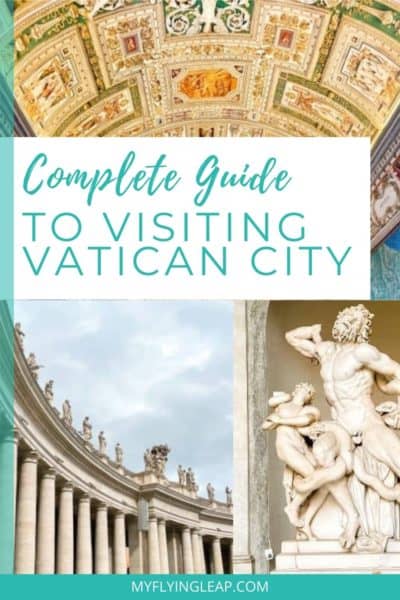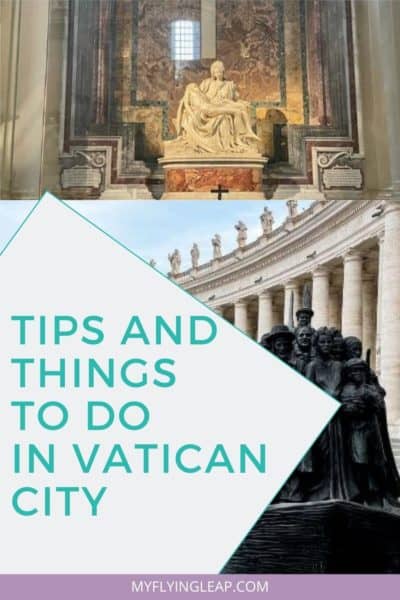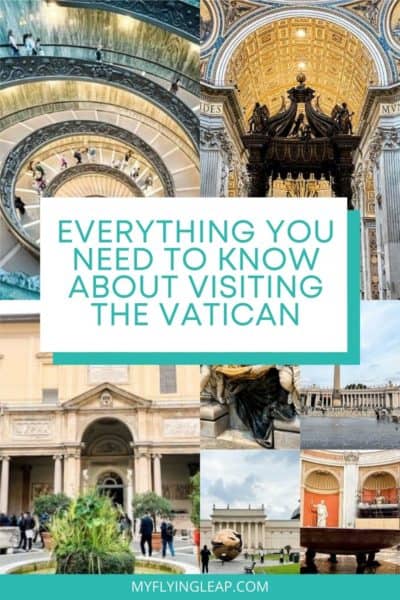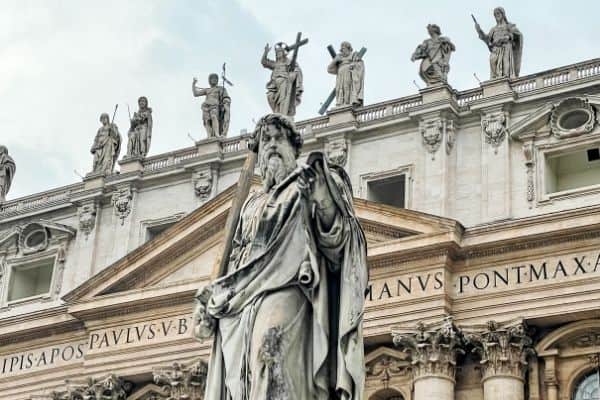Visiting the Vatican—A How to Guide for Visiting Vatican City
Visiting the Vatican and not sure where to start?
Well, you’re in the right place! Visiting Vatican City is one of the top things to do when visiting Rome. In my book, it’s a must-see. I’ve been to Rome twice, and I enjoyed the Vatican so much that I did it both times!
You won’t want to miss everything from the monumental and impressive Saint Peter’s Basilica and St. Peter’s Square to the incredible Vatican Museums, including the famed Sistine Chapel.
Here are some top spots to add to your itinerary when you visit the Vatican, including when to visit, how to visit, and the top tips.
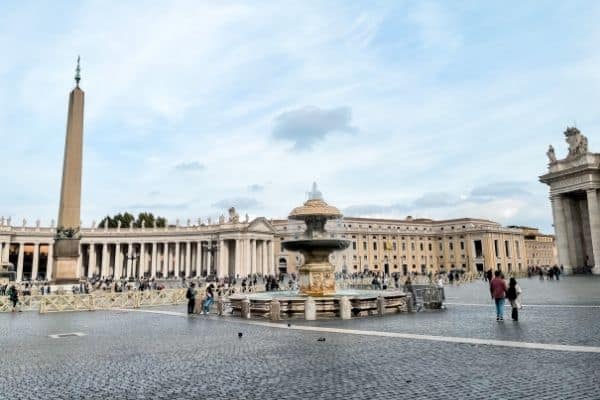
This post may contain affiliate links, which means I’ll receive a commission if you purchase through my links at no extra cost to you. Please read the full disclosure for more information.
What is Vatican City?
Though it’s considered by many to be part of Rome, Vatican City is actually a separate city-state surrounded by Italy. It gained its independence from Italy in 1929 with the Lateran Treaty.
The Holy See, a sovereign entity, rules it. The Pope, the Bishop of Rome, and the head of the Catholic Church rule the Holy See.
Vatican City, also known as the Vatican, is quite small. It’s only around 121 acres with a population of around 825. This makes it the smallest state in the world, both by population and size.
The Vatican is known as the center of the Catholic religion and the location of St. Peter’s Basilica. It’s also home to the Vatican Museums, a treasure trove of historic and priceless artwork.
Visiting the Vatican is one of the most popular things to do when visiting Rome. It’s something that shouldn’t be missed! No matter your ancestry or faith, it’s an impressive place and well worth your time.
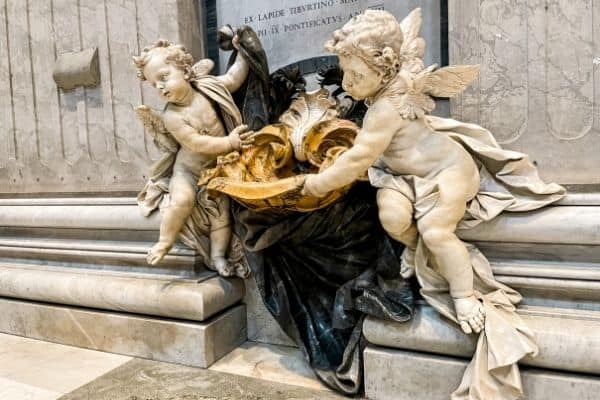
Vatican City’s Brief History
The now Vatican City area was once a marshland called Ager Vaticanus. During the Roman Empire, it was an administrative region with large villas.
In 67 AD, Roman Emporer Nero executed St. Peter and other Christians near Vatican Hill, and they were buried in a necropolis nearby. In the 4th century AD, a basilica was built over St. Peter’s grave. It became a popular pilgrimage site.
Following an attack, a wall was built around St. Peter’s Basilica in the mid-9th century. In 1277, the Vatican became the official home of the Papacy. Then, the papal court shifted to Avignon, France, in 1309, and the Vatican was abandoned and fell into disrepair.
In 1377, the Catholic Church returned to the Vatican, where it remains today. A new St. Peter’s Basilica was erected, and later, the Sistine Chapel and the Apostolic Palace were built.
Vatican City is now a world treasure, revered by Catholics and beloved by all.
window.fd(‘form’, { formId: ‘5f654c78bf43d8ae8bbfa457’, containerEl: ‘#fd-form-5f654c78bf43d8ae8bbfa457’ });Vatican City Visit Details & Tours
Here is the information for tickets to St. Peter’s Basilica, the Vatican Museums, and the current open hours.
Note: There is no cost to visit St. Peter’s Square.
Go to the official Vatican site for tickets.
St. Peter’s Basilica
St. Peter’s Basilica is free to visit, with one exception. If you want to climb the dome, it costs 10 Euros to take the elevator up and 7 to climb the stairs.
There are 551 steps, so plan wisely!
You need tickets to visit the basilica, and they are timed entry. Lines are always very long, so get them online in advance.
St. Peter’s Basilica is open from 7 a.m. to 7 p.m., though in the winter, from October 1 through March 31, it closes at 6:30 p.m. The dome is open from 7:30 a.m. to 5 p.m. year-round.
It’s closed to the public on Wednesday mornings.
Vatican Museums
The Vatican Museums are open from 9 to 6, Monday through Saturday. Tickets are available until 4 p.m., which is the last timed entry available.
The museums are closed on Sundays, except for the last Sunday of the month when they are open from 9 to 2. (Final entry is at 12:30). Tickets are free on the Sunday they are open, but as you might expect, it gets quite crowded.
Tickets to visit the Vatican Museums cost 17 Euros for adults (around $18.25 USD) and 8 for children (around $8.50 USD). It includes access to all museums and includes the Sistine Chapel.
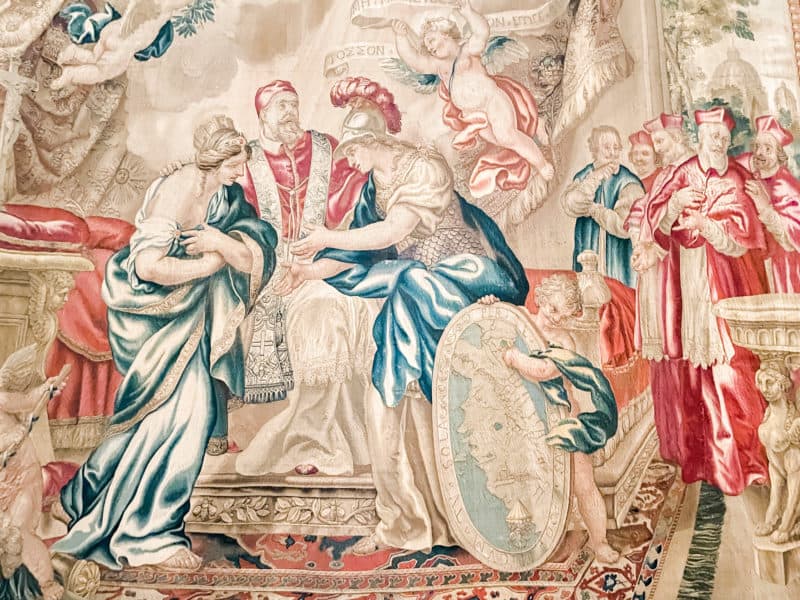
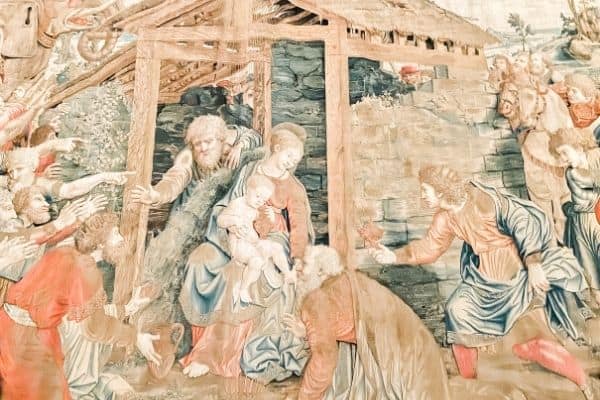
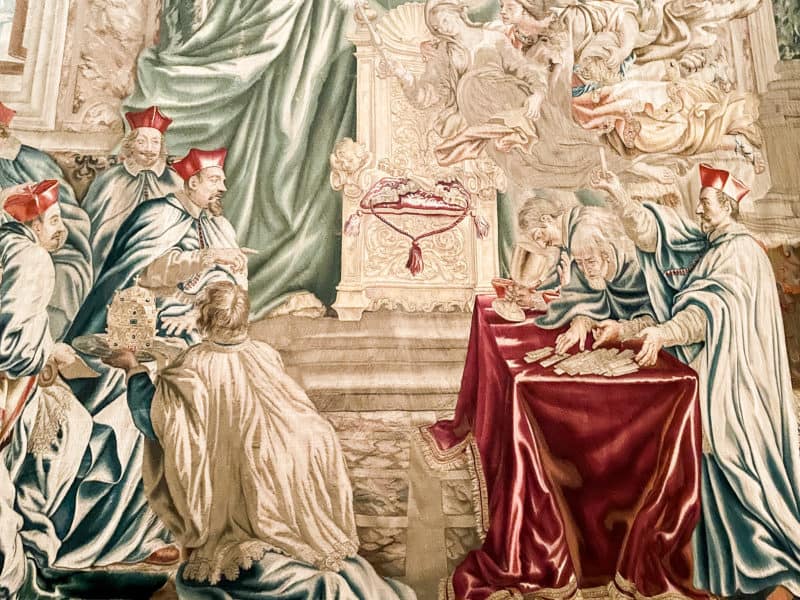
Tickets and Tours
You may find a long line if you decide not to book a tour in advance. But don’t worry; you’ll often find people selling tours there. Of course, you won’t know who you’ll get, but they often hold a spot in line near the front, so pay their fee and skip it!
This is what I did my first time at the Vatican. I had no clue and just showed up on a rainy day. The line was impressive, but someone was selling a tour, and I skipped most of it.
She was an art history student and quite incredible, so it worked out! However, these can be scams; you never know what you’re getting. So, it’s best to book in advance.
Whether you choose a small group tour or a private tour is a matter of finances. There are a lot of options ranging from a skip-the-line ticket to private tours and tours before they even open to the public. Want to meet the Pope? You can do that, too!
What to See When You Visit the Vatican
There’s a lot to see and do when you visit the Vatican, so you’ll need to prioritize. You can see the top highlights in around half a day, but if you can, plan to spend at least a full day, particularly if you love art, culture, and history.
At a minimum, visit St. Peter’s Square, St Peter’s Basilica, and the Vatican Historica Museum. This is where the Sistine Chapel and Rafael Rooms, the former quarters of the Pope, are located.
If you have more time and love museums, visit others. There are incredible works of art and masterpieces throughout these museums.
You’ll notice members of the Swiss Guard walking around the square and the basilica. Their role is to protect the pope.
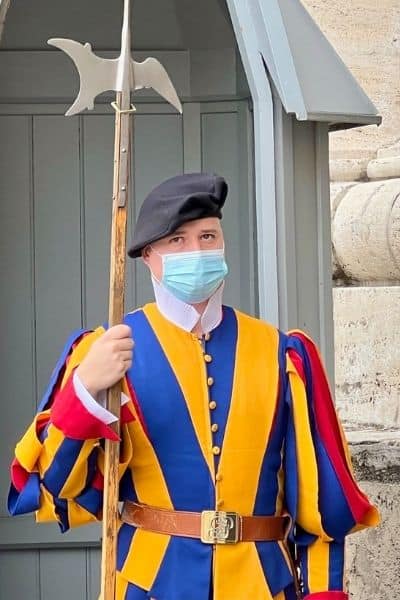
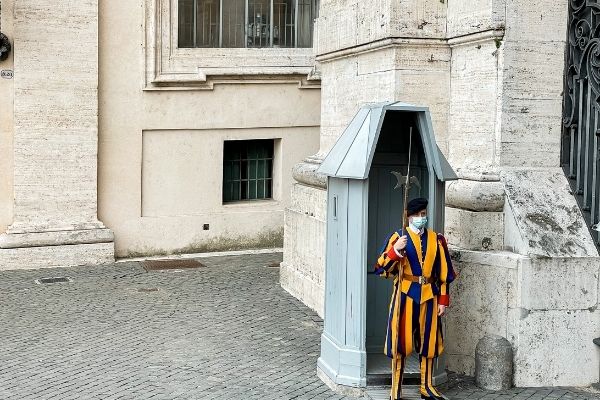
St. Peter’s Square (Piazza San Pietro)
When you visit the Vatican, chances are the first place you’ll head is St. Peter’s Square. This is a great starting point, as it’s impressive!
It’s a huge plaza located in front of St. Peter’s Basilica in Vatican City. The Square, along with the basilica, is named after Saint Peter, Jesus’ apostle and believed to be the first Pope by those of the Catholic faith.
The square was designed by Gian Lorenzo Bernini from 1656 to 1667. It was commissioned by Pope Alexander VII to provide an appropriate location for him to bestow his blessing on the people.
It’s surrounded by a massive ring of 284 travertine columns on which sculptures of martyrs and saints reside. This was intended to represent the history of the church. The columns form a perfect ellipse. From one spot, they line up to the center of both sides of the columns.
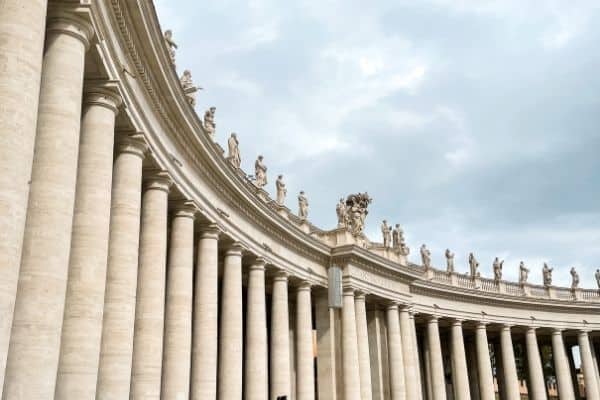
In the center is a large ancient 3000-year-old Egyptian Obelisk erected in 1586. Though many of the obelisks throughout Rome are recreations, this original was brought from Egypt. It depicts the triumph of Christianity over history on the top.
Pope Francis also commissions a large, dark sculpture. It shows immigrants on a boat and depicts migrants fleeing situations like Nazi Germany and Syria during their civil war. It’s called “Angels Unaware” and was created by Timothy P. Schmarz from Canada.
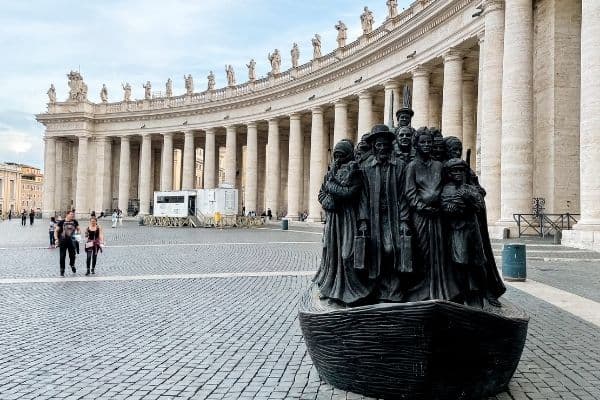
Even if you’ve come to see the basilica, take some time to wander around this impressive square. I’ll tell you — I had already seen it more than a decade earlier, and it still blew me away! Everyone should visit the Vatican when they visit Rome!
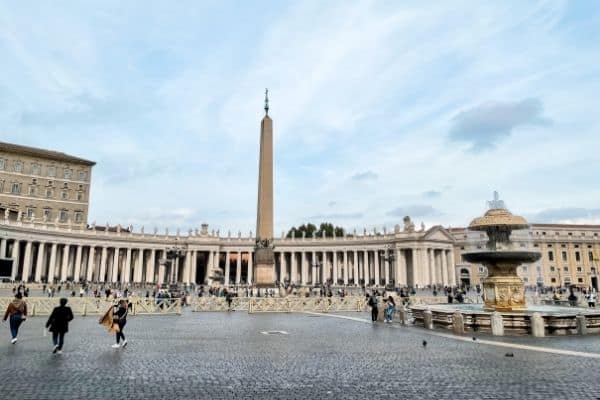
St. Peter’s Basilica
Perhaps one of the greatest masterpieces in the Vatican, and certainly in St. Peter’s Square, is the basilica. It’s magnificent and has the look of an impressive palace (which it really is).
It’s a Renaissance-style church designed to replace the Old St. Peter’s Basilica built in the fourth century by Roman Emporer Constantine the Great. Several notable artists, including Gian Lorenzo Bernini and Michelangelo, created the design. Work began in 1506 and ended in 1626.
The facade of St. Peter’s Basilica is stunning and worth a few minutes. The top of the structure has a large dome, the tallest in the world (448.1 feet or 136.57 meters). And, on top of the basilica are the statues of four saints.
In the front, you’ll see statues of Saint Paul holding a sword and Saint Peter holding the keys to the city. Jesus is above the front of the facade in the center, so you receive a blessing when you enter.
Inside is equally impressive. It’s the largest church in the world on the inside and is regarded as one of the holiest Catholic shrines. It’s a pilgrimage site for faithful Catholic people.
The structure was built over the burial site of Saint Peter, one of Jesus’ apostles and the first Pope of Rome. His tomb resides in the necropolis under the high altar, called the Altar of the Confession. Bernini designed it.
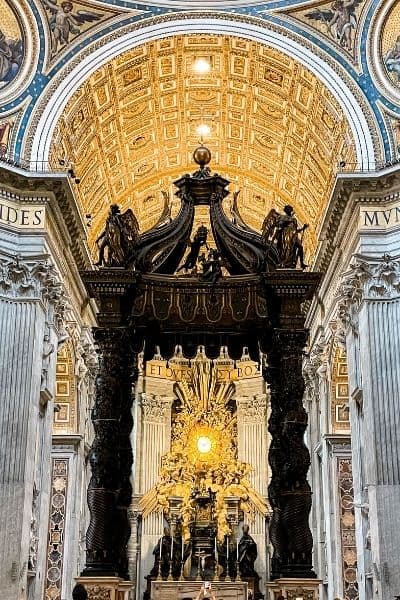
Inside St. Peter’s Basilica
Before you head inside the main area, check out the magnificent iron doors. They are the gate doors from the original church and show Saint Peter handing keys to a pope and the crucifixion of Peter. On the left, you’ll see Saint Paul, among other historical references.
Inside the basilica is a trove of treasures. First, the inside is spectacular, with different kinds of rock on the walls, floor, and columns. You’ll find incredible statues, including Bernini’s Baldachino and Arnolfo di Cambio’s St. Peter.
You’ll notice St. Peter’s foot is a lighter color. People touch or kiss his foot to ask for a blessing. There are many gorgeous sculptures and over 100,000 square feet (10,000 square meters) of mosaics.
To the right of the entrance, you’ll find Michaelangelo’s La Pieta (meaning mercy or compassion). He was only 23 years old when he did this, and it represents accepting the will of God.
To the right, you’ll find a set of Jubilee Doors. The four papal basilicas in Rome each have them, and they are opened only every 25 years.
One of the most magnificent works of art in the basilica is the bronze canopy over St. Peter’s tomb. Bernini and Borromini designed it, and it’s a focal point in this church.

St. Peter’s Basilica Dome
Another magnificent thing to do is climb the dome of the basilica. It’s an impressive 551 steps, though you can also take an elevator.
Michelangelo designed it, and it was his gift to the Church. Unfortunately, he started this last major work in his 70s and never saw it completed.
The dome is exquisite, decorated with golden mosaics and frescoes. You’ll find many historical/biblical paintings, including those of Jesus, the Virgin Mary, Saint Paul and the Apostles, John the Baptist, and more.
Not only do you get an incredible view of the basilica inside from up here, but also some ridiculous views of Rome.
Vatican Museums
The Vatican Museums contain 26 different structures. However, by far, the most popular is the one with the Sistine Chapel. So, if you’re short on time, this will be the one to visit.
These museums are open to the public. The museums represent the Catholic Church and papacy collection over the centuries. They display over 20,000 works and contain nearly 70,000 works of art.
It’s one of the most frequently visited art museums in the world. You’ll find a range of art from paintings, tapestries, sculptures, and more. They are from Ancient Rome, Greece, Egypt, and other areas. Some are religious, and some are historical.
Pope Sixtus IV started the collections of artwork and antiquities displayed in the Vatican Museums over 500 years ago. Though many of the pieces in these museums are religious, they also reflect the various times in which they were created.
The Vatican Historical Museum houses both the Sistine Chapel and the Rafael Rooms, two of the most popular places to visit in the museums. It’s in the back of St. Peter’s Cathedral to the north.
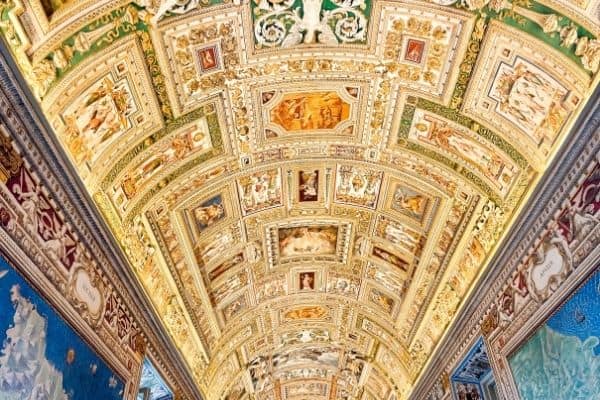
Palace of the Belvedere
Be sure to check out the Palace of the Belvedere, which offers some of the most incredible views of Rome. It also has many incredible ancient Greek statues.
You’ll see the statue you’ll likely recognize of Perseus holding Medusa’s head. There is a statue of Apollo of Belvedere.
A fascinating sculpture of Laocoön and His Sons is also in this area. There’s a lot going on in this incredible sculpture depicting a scene from Ancient Greece and Troy. As the story goes, Laocoön realizes something is wrong with the Trojan horse, but no one will listen.
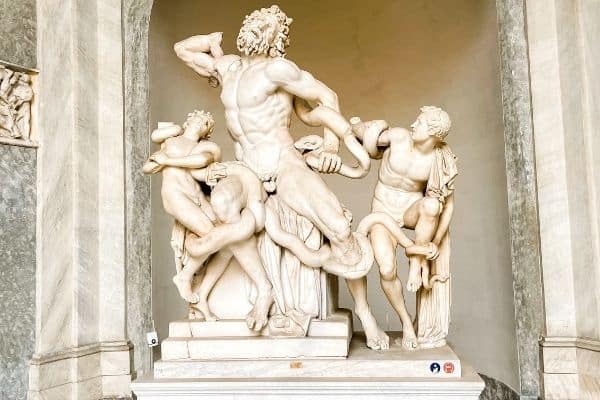
This sculpture represents the fight of man against fate. A quote goes something like, “Beware of Greeks bearing gifts,” which comes to mind when looking at this scene with a serpent intertwined around the three figures.
There’s a headless torso of the Belvedere, which Michaelangelo may have done. Also, you’ll see a bronze statue of Hercules and some stone coffins. This is a magnificent area worth seeing.
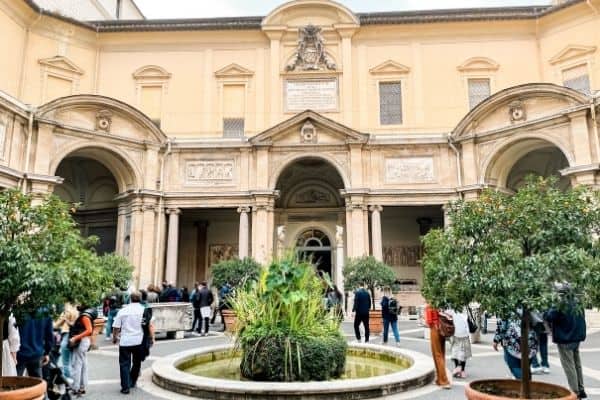
Sistine Chapel (Cappella Sistina)
This world treasure was commissioned in 1473 by Pope Sixtus IV. Though it’s known for the famed artist Michelangelo’s work, he didn’t initially work on it. It was created to be the private chapel of the popes of Rome. It wasn’t intended for the public but’s now a national treasure.
Artists Botticelli, Perugino, Rosselli, Ghirlandaio, and Signorelli were hired to fresco the walls in the Sistine Chapel. Then, in 1508, Michelangelo (in his 30s) painted the famous ceiling, commissioned by Pope Julius II. It took him four years of challenging and painstaking work.
Michelangelo was resistant at first but relented under pressure from the Pope. You’ll see images you know well, like the Last Judgement and The Creation of Adam.
There are over 300 figures painted on the ceiling, and the overall scene is intended to represent the inner restlessness of creation. You’ll see scenes from both the Old and New Testaments.
This is not to be missed. First, check out the “map” of the Sistine Chapel outside to get an idea of what you’ll see. Many historical and biblical stories are painted on the ceiling and the walls.
Then, head on in. Unfortunately, you’re not allowed to take photos (and yes, they do monitor!), but you can certainly take your time to soak it all in. It does get quite crowded, and it’s entertaining to see most people visiting staring up and walking. Yes, people will bump into you. But it’s simply magnificent.
Rafael Rooms (Stanze di Raffaello)
Another popular place to visit is the Rafael Rooms, painted by the famous artist Rafael and his workshop. They once served as a suite of reception rooms for the Pope, who lived in the Palace. It’s now part of the museum.
Pope Julius II commissioned the frescoes for these rooms, which are stunning. The work outlived both the pope and the artist. However, his successor, Pope Leo X, continued the project with Rafael’s assistants.
If the Pope tried to outshine the beauty of the former Pope’s living quarters, he most certainly succeeded. Now, they can visit the same museum as the Sistine Chapel.
If you tour both, plan for at least a few hours or more. I was able to see the Rafael Rooms during my first visit to Rome, but unfortunately, I didn’t have time with my recent visit.
Other Rooms in the Vatican Historical Museum
There’s a lot more to see in this incredible museum. You can literally spend half a day or more just touring it. Some of the other areas I really enjoyed that I got to see include:
- Room of Tapestries — These tapestries were designed here but woven in Brussels. There is an interesting one where the eyes of Jesus seem to follow you as you walk past it. And this happens if you approach from either direction.
- Map Room — This one was fascinating, with hand-painted maps of the area as they knew at that time. The ceiling in this room is spectacular.
- Momo Staircase — Check out this work of art before you leave! It’s impressive.
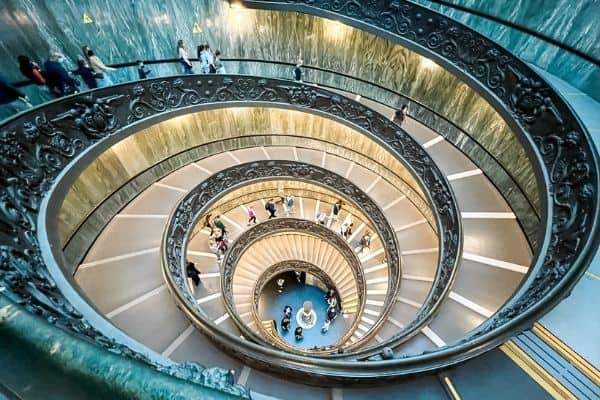
Helpful Tips to Visit the Vatican
Here are some of the top helpful tips for visiting the Vatican that you won’t want to miss.
- Dress code — Keep in mind that the Vatican is a sacred place, so appropriate dress is required. Make sure knees and shoulders are covered. So, no shorts, tank tops, cropped tops, and miniskirts.
- Book online — the line to get into St. Peter’s Basilica and the Vatican Museums can be quite long. Impressively so, if you weren’t stuck waiting, do yourself a favor and book a tour or a ticket in advance.
- Eat before you go (or bring snacks) — The restaurants near this area are tourist traps and not worth your time and money. Bring water and snacks to skip them. If you can’t wait, I’ll include some options below.
- Visit early or late in the day — Nearly 20,000 people visit this area EVERY DAY. It’s a well-oiled machine, but if you want to avoid the thickest crowds of people, aim to visit early or late. Choose early if you’ll spend a good bit of time visiting.
- Visit between Tuesday and Friday — A helpful tip is to visit during the week. However, if you want to do an early morning, you’ll want to skip Wednesdays (if you want to go inside St. Peter’s Basilica). It’s closed to the public for a papal audience.
- Minimize your bag — Everything you bring goes through a security check. Pack light to avoid any delays.
- Book a tour — This is one of the city’s most fascinating areas. I highly recommend exploring with a tour guide who can share this area’s history, culture, and art.
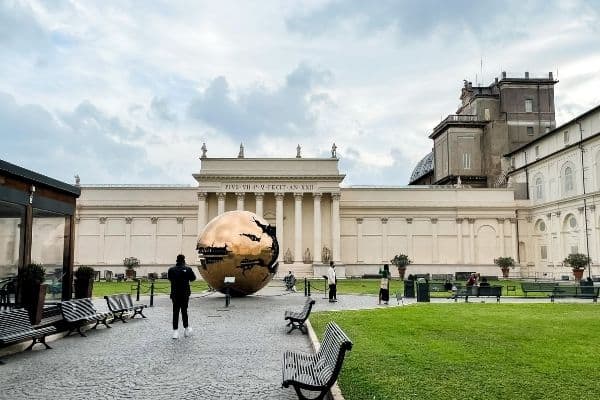
How to Get to Vatican City
Getting to Vatican City is easy. If you want to walk, head northwest of the historic city center and cross the Tiber River.
Public transportation is easy to take, and the orange line (line A) will take you close. Stop at the Ottaviano Metro stop. This stops at Termini (the central train station), Barberini (Trevi Fountain), and Flaminio (Piazza del Popolo), some other popular tourist areas. From the stop, it’s a few minutes away.
Of course, you can also take a cab there as well.
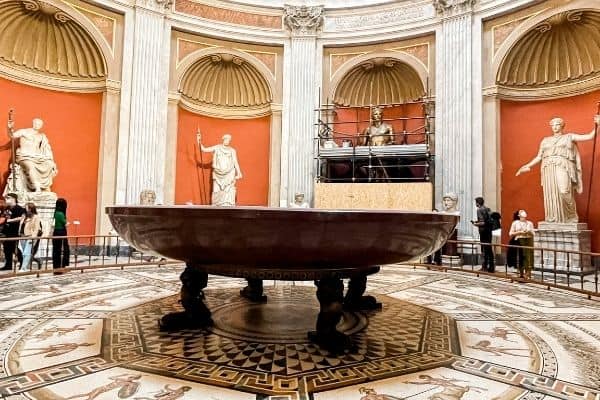
Where to Eat Near the Vatican
As I mentioned before, there are not many great places to eat right around the Vatican. Most are overpriced, and the food is not great.
However, there are some nice options nearby if you finish doing your museum visits and tour and are feeling hungry!
- Il Sorpasso: This restaurant is located right near St. Peter’s Basilica. Since most Vatican tours end here, you can pop in once your tour ends. It’s pretty reasonably priced compared to other restaurants in the area, and it has pizza and all your favorite pasta dishes.
- Il Gatto E L’Uva: This restaurant is technically within walking distance, but it might be a bit far if you’ve already spent the whole day walking around the Vatican. They have a nice outdoor seating area, and most dishes have fresh seafood.
- La Zanzara: This place is near St. Peter’s Basilica, and you can walk here after your tour ends. They have small dishes if you are not too hungry and a large variety of meat, salads, and pasta.
When to Visit the Vatican
The Vatican is always a popular place to visit when people visit Rome. You’ll never really find a time when there aren’t crowds. However, to maximize your time, November and between January and March are the best times to go.
You may want to avoid the high holidays, around Christmastime and Easter, as it’s especially busy then.
The How-to Guide for Visiting the Vatican
I hope this guide to visit the Vatican was helpful. It’s an incredible place to visit and not something you want to miss out on when you go to Rome. It takes a little preparation to ensure you’ll have a great time, so plan accordingly with the tips in this post.
And don’t mistakenly think that this is only for Catholics. The Vatican is an area anyone interested in art, history, and culture would love.
You Might Also Like
- What to Expect at Gypset Yoga Retreat Italy—a Detailed Review
- 11 of the Best Things to Do in Capri for a Perfect Day
- What to See When You Visit Pompeii Archaeological Park
- Why You Should Visit the Herculaneum Ruins + Top Tips
- Rome in a Weekend—How to See All of the Top Sites
- 3 Best Umbria Towns to Visit—Gubbio, Perugia, and Assissi, Italy
- Trastevere in Rome—What to See + Top Trastevere Restaurants
- Top Things to Do in Sorrento & Reasons to Stay There
Like it? Pin it!
